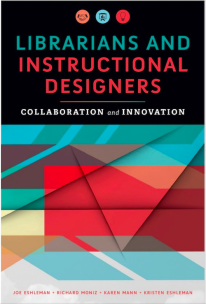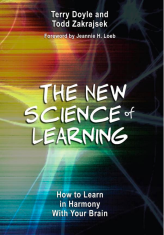The importance of formative assignments with feedback throughout the learning experience supports the success all students. It allows them to track their learning through practice and feedback in order to make  changes as needed along the way. Understanding how to become a self-regulated learner is key.
changes as needed along the way. Understanding how to become a self-regulated learner is key.
Month: January 2018
Learning How to Learn
How does one learn how to learn? With lots of practice! It is a fascinating look into metacognition that helps us understand how we learn so we can focus on the strategies and practices that help us most effectively. Here’s a look at a tip on Helping Students Learn How to Learn
Rock Your First Day of Class!
In writing this tip, I kept reflecting on various ‘first’ days that I experienced, both as an educator and a student. So much is happening on this first day! Everything from excitement, to fear, to curiosity. As I leave my office and head to the first day of class in a new semester, I often have emotions that feel just like the first time that I taught the class. I am nervous but excited. As a student, I get these very same feelings.
How can we tap into these feelings and really set the stage for the learning experience? Check out some brief tips: Rock Your First Day of Class!
Connecting Librarian-and-Instructional Designer
Through ID2ID Peer Mentoring
By Jennie Goforth, Librarian at UNC Chapel Hill and Kim Vincent-Layton, Lead Instructional Designer at CSU Humboldt
This post is our culminating reflection of participation in the 2017-18 Cross-institutional ID2ID Peer Mentoring Program for Instructional Designers co-sponsored by Penn State University and the EDUCAUSE Learning Initiative (ELI).

Kim and Jennie in a Zoom session
As we embarked on this amazing adventure, we gathered valuable tips and resources from our respective fields, practices, and institutions. Our focus on the topic of librarian and instructional designer collaboration was a natural fit, as Jennie is a librarian and Kim is an instructional designer. We were both interested in spending time reading and thinking about how these two professions are and should be working together to further the teaching and learning happening in higher education.
One of the resources that provided a framework for conversation was our common reading, Librarians and Instructional Designers:  Collaboration and Innovation (Eshleman, Moniz, Mann & Eshleman, 2016). This book identified some key aspects to help identify changes in higher education with respect to the roles of librarians and instructional designers particularly with our digital world, as well as where new synergy has and can be created in collaboration across the practice. Following are brief insights of our insights and examples from our fields, along with potential collective opportunities that move beyond collaboration and into deeper impact on student learning.
Collaboration and Innovation (Eshleman, Moniz, Mann & Eshleman, 2016). This book identified some key aspects to help identify changes in higher education with respect to the roles of librarians and instructional designers particularly with our digital world, as well as where new synergy has and can be created in collaboration across the practice. Following are brief insights of our insights and examples from our fields, along with potential collective opportunities that move beyond collaboration and into deeper impact on student learning.
Collaboration between Instructional Designers (ID) and Librarians (LIB)
- Brainstorming diverse ways to reemphasize or re-ignite teaching, learning, and design particularly with the surge of the digital world, e.g., co-developing and facilitating workshops for faculty (digital scholarship and learning design) and students (course design, copyright, and research).
- In the past, UNC has done popular joint workshops with our Center for Faculty Excellence, but these have fallen by the wayside. Reviving these workshops could be beneficial to our faculty, especially given our new expertise and focus on multimedia assignments.
- At HSU, we’ve recently created a new Center for Teaching and Learning that is grounded in collaborative partnerships based on student learning. These partnerships have begun to cultivate a culture of collaborative creation and facilitation of learning opportunities across functional groups.
- Intentionally looking for ways to lead and strengthen the quality of teaching and learning by helping the learners understand how our global society impacts learning.
- Efficient and effective communication by combining efforts and messages, e.g., with the ever increase in digital communication this combined effort could reduce the number of messages that faculty receive about similar information. With careful planning, coordinated messages could give faculty better and more focused information about how both groups can help with their teaching — minimizing noise and maximizing comprehension!
- Creating communities of learners, e.g., Writing Group Community that includes Learning Center specialists, instructional designers, librarians, and English Department faculty to create a holistic approach to writing support for faculty and students in a variety of contexts
- At UNC, Jennie is part of a community of practice focused on library instruction and teaching. Wouldn’t it be great to invite IDs to some of our meetings, to further librarians’ understanding of what IDs do as well as to brainstorm further collaborations?
- At HSU, Kim is launching a Professional Learning Communities (PLC) Program that is cross-disciplinary and inclusive of faculty and staff. This spring, the first PLC is a ‘train-the-trainers’ model to support faculty and staff in creating PLC curriculum in a learning community environment.
Challenges with ID and LIB collaboration
- Grasping a clear understanding of the role of librarians and the role of IDs and how to best collaborate for collective impact
- Both professions deal with identity challenges. The traditional view of librarians as people who just know about books, and misconceptions about the ubiquitous nature and changing descriptions of instructional designers both make it difficult for faculty and other university staff to understand exactly what we do and what services we provide. This negatively impacts our ability to make positive relationships with faculty members.
- Potential territorialism of the fields, e.g., “the invisible wall”, in searching for synergy, overlap, confusion both internally (among teams/units/organizational structure) and externally (clients)
- Limited time and resources to do more than complete current day-to-day responsibilities
- While similar in many ways, the two professions also have some major differences.
- Similarities
- Focus on service, both to faculty members and students.
- Focus on learners and crafting learning experiences.
- Major responsibility is to support faculty members in the classroom, though often not teaching courses themselves.
- Rapid changes in both professions, due to technological advances and the changing nature of higher education.
- Differences
- Librarianship is perhaps a more traditional and established field (though often misunderstood in the modern era). Instructional design as a profession is relatively recent.
- Instructional Designers often focus more on learning technologies and how they fit into the campus infrastructure.
- Similarities
Value of face-to-face sessions
What we found valuable in our peer relationship in this program were the ongoing synchronous Zoom sessions that allowed us to get to know each other and get an understanding of our institutions, structure, and practice. We reflected that although asynchronous reading and thinking helped with our workflow, the synchronous format created a space for building a relationship, something noted as critical in learning.
ELI Key Issues
In our mid-point reflection, we noted Faculty Development as one of main foci of conversation in the respective work we engaged in. Noted by the ELI 2017 Key Issues in Teaching and Learning as one of the top transformative areas in higher education, these  faculty development efforts provided a platform for sharing resources and ideas about how to most effectively support 21st Century learning through digital skills as a real-world practice. Shared resources:
faculty development efforts provided a platform for sharing resources and ideas about how to most effectively support 21st Century learning through digital skills as a real-world practice. Shared resources:
- Design Guide to Infographics
- Professional Learning Community Model
- New Science of Learning, Doyle and Zakrajsek (a book for students to understand how to most effectively learn and a book for faculty to support their students’ learning)
What we’ve noted since our first reflection, is the extension of our work in two other ELI Top Key Issues that include Academic transformation and Evolution of the Profession.
- Academic transformation includes the rapid increase in digital scholarship and the role of librarians and instructional designers in facilitating this transformative work while also addressing the quality and effectiveness of this information. While Eshleman, Moniz, Mann, & Eshleman (2016) note a huge shift in changes for the librarian’s role, this also shifts the instructional designer’s role in work with faculty on course design. The traditional role of the librarian as a person who buys books and keeps them in order on the shelves has evolved greatly over the last several decades. Libraries now have functional specialists in all types of technologies that can help scholars throughout the research lifecycle — from finding the best information in all different types of media to publishing and preserving that research.
- Evolution of the Profession was a topic that we spoke about often. The world of higher education is changing rapidly for people in all types of roles in colleges and universities. There is (and must continue to be) a constant drive to innovate, to make our institutions more efficient, to focus and adapt more readily to our students’ and researchers’ evolving needs, and to show our value to the teaching and learning happening at our institutions. These factors have greatly influenced the work that we both do. It was also interesting to discuss how these changes are being reflected at our two very different campus environments.
Conclusion
We have both found the ID2ID program to be valuable. Our biweekly Zoom meetings were filled with lively and interesting discussion!
Jennie: I felt that my understanding of what instructional designers do was greatly increased through my conversations with Kim. This new understanding will be invaluable as I work more closely with IDs at my own institution — I have many ideas about how they and the library can effectively collaborate.
Kim: I really value the relationship that Jennie and I developed that not only provided a safe space for conversation about the changing roles of IDs and librarians, but also ideas for cultivating this on my campus. I also feel like I have made a strong connection with a colleague that I can reach out to for ideas and resources.
References
Doyle, T., & Zakrajsek, T. (2013). The new science of learning: how to learn in harmony with your brain. Sterling, VA: Stylus.
Eshleman, J., Moniz, R., Mann, K., & Eshleman, K. (2016). Librarians and instructional designers: collaboration and innovation. Chicago: ALA Editions.